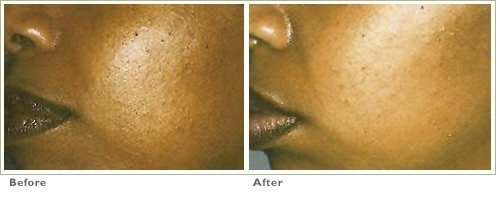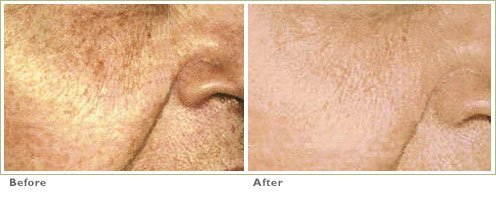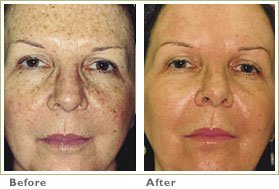Chemical Peels for Dark Spots (Sun & Age Spots)
About Chemical Peels
Alpha-hydroxy glycolic acid and beta-hydroxy salicylic acid are natural substances derived from fruit and sugar cane which were used by Cleopatra for beautification purposes. These agents help turn back the clock through a series of no-downtime procedures. Not all peeling agents are the same, and it is important for patients to undergo such procedures by an experienced skin care professional to achieve optimal effects.
Need a sooner appointment? Call our office directly for more options. 1.888.411.3376
Schedule an Appointment Online:
Step 1, Select a clinic location from field below, or call us at 1.888.411.3376 (DERM)

Benefits
- Reduces acne
- Reduces sun damage, wrinkles and fine lines
- Reduces discoloration and brown spots
- Reduces melasma/mask of pregnancy
- Reduces enlarged pores, white heads and black heads
- No down time
- Minimal risk
- Stimulates new collagen growth
Understanding Chemical Peels
Chemical peels are specialized treatments that involve the application of a chemical solution to the skin, which helps in exfoliating and eventually peeling off the old, damaged skin layers. This process reveals fresher, smoother, and more youthful skin underneath. Available in various intensities—light, medium, and deep—chemical peels can be tailored to address specific skin concerns such as fine lines, wrinkles, acne scars, hyperpigmentation, and uneven skin tone. By promoting cell turnover, chemical peels enhance the skin’s natural healing process, leading to visibly rejuvenated skin.
How Does it Work?
Glycolic acid has two direct skin rejuvenating effects:
- exfoliation occurs as this substance dissolves the natural glue holding dead skin cells together
- dynamic stimulation of new collagen growth
Both effects result in reduction of irregular coloration and contour, reducing lines, wrinkles, brown age spots, and improving skin luster and tone. TCA (trichloroacetic acid) peels can be performed for a more potent effect, though downtime can result from the higher concentrations used.
Who is a Candidate?
Most skin types can undergo these procedures.
What can I Expect?
More even, glowing and smoother skin tones with less acne, lines and discoloration.
Results may vary.
Safety & Side Effects
This treatment has a very strong track record for safety and precision. Side effects are rare and generally temporary. The specific risks and the suitability of these procedures for a given individual can be determined only at the time of consultation. All procedures have some degree of risk. Minor complications that do not affect the outcome occur occasionally.
Recovery Time
Alpha- and beta-hydroxy acid peel patients usually require no down time. TCA is a stronger peeling agent that can deliver excellent results, though down time is possible, depending on the strength of acid used.
Does it Hurt?
Slight tingle is the usual sensation
Before Treatment Instructions
Avoid excessive sun exposure and retinoic acid creams (Retin-A, Differin, Avita) for two to three days before treatment.
After Treatment Instructions
Avoid excessive sun exposure and retinoic acid creams (Retin-A, Differin, Avita) for two to three days after treatment.

Who Performs the Treatments?
Our Physicians, Aestheticians and Physician Assistants
Find a location near you
Factors to consider when choosing the appropriate peeling agent for a specific patient include:
- Patient’s skin type
- Class of peeling agents
- Concentration of acid
- pH (measure of acidity/alkalinity)
- Application time
- Buffering agent used for final rinse and neutralization of any remaining acid
Our aestheticians weigh all such variables when selecting the most appropriate peel for a given patient.
Chemical Peel Gallery
Chemical Peels for Brown Spots
Chemical Peels for Wrinkles & Aging
*Results may vary.
Alternatives
- Acne Laser Treatment
- Acne Surgery
- Clinical Facial
- Medications (Antibiotics, Topical, Accutane)
- Microdermabrasion
- Photodynamic Therapy.








